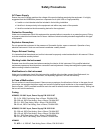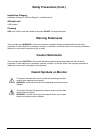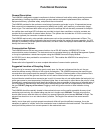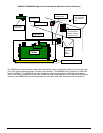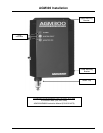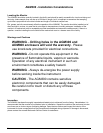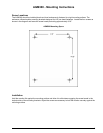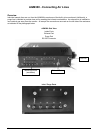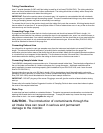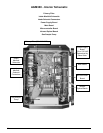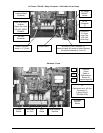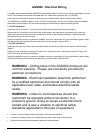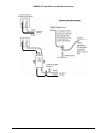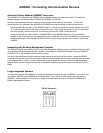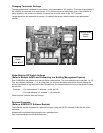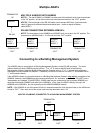
Instruction 3015-4275 5
Tubing Considerations
Use ¼" outside diameter (0.040" wall) flex tubing is used for all air lines (P/N 304-2742). The tubing should be
clean and free of residual moisture or other contaminants. The tubing should be cut cleanly with a sharp knife
and care should be taken not to distort the tubing end.
IMPORTANT: Due to the reactive nature of ammonia gas, it is important to use materials that will not absorb
ammonia gas as it passes though the sampling system. The use of unauthorized tubing or any other materials
in the gas sampling stream may lead to erroneously low readings.
To connect the air lines to the monitor simply push the tubing firmly onto the connector. All tubing bends should
have a radius of no less than 5" to assure proper airflow. If kinks or obstructions occur in any of the air lines the
instrument may not function properly.
Connecting Purge Line
A purge line is required to draw fresh air into the instrument and should not exceed 300 feet in length. It is
advisable to terminate the line outdoors, provided the input is not exposed to rain, snow, ice, exhaust fumes, or
other airborne contaminates. If an outdoor installation is impractical, the line should be run to an area inside the
facility that you are certain is not contaminated with ambient ammonia gas. A line-end filter (P/N 3015-3420)
should be attached to the end of the purge line.
Connecting Exhaust Line
An exhaust line is required to vent gas samples away from the instrument and should not exceed 300 feet in
length. The exhaust line should terminate in a location that is completely isolated from the purge line
termination point and other areas of the facility that will be monitored. Ideally this line should terminate outdoors
in a location that is not exposed to the elements. This line does not require a line-end filter. If the exhaust line
terminates outside the building, position the tubing so that no water or moisture can enter it.
Connecting Sample Intake Lines
The AGM300 is designed to accommodate up to 16 separate sample intake lines. The standard configuration of
the unit includes one manifold of 4 intake connectors and 1 purge connector. Additional manifolds can be
easily installed to increase monitoring capacity (field installation kit part P/N 3015-3419, and 4 zone line end
filter kit P/N 3015-3411).
Sample intake lines can be up to 500 feet in length. All line terminations should be positioned to reduce the
possibility of mists, aerosols, oil, water, dust, or other contaminates being drawn into the instrument. A line-end
filter (P/N 3015-3420) should be attached to the end of each sample intake line.
IMPORTANT: DO NOT plug any of the zones. Plugging a zone will give the monitor a false indication during
start up.
Please refer to the earlier Section Suggested Location of Sampling Points to learn more about where to place
the ends of the sample intake lines.
Water Trap
A water trap has been installed as a standard feature. The water trap prevents condensation or moisture from
entering the infrared device and causing serious damage. To empty the water trap, loosen the wing nut and
allow water to drain – be sure to retighten the wing nut.
CAUTION - The introduction of contaminants through the
air intake lines can result in serious and permanent
damage to the monitor.



